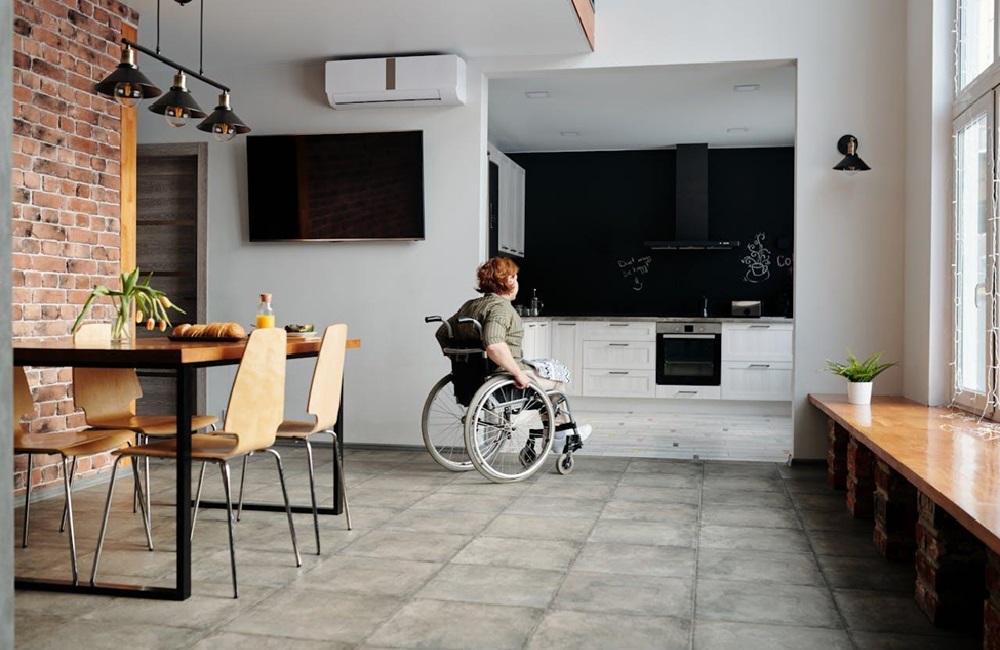Moving through the home should be a seamless experience, yet for individuals with mobility challenges, it can often pose unexpected difficulties. Whether you’re elderly, living with a disability, or using a wheelchair, enhancing home mobility is crucial.
Not only does it promote independence, but it also ensures comfort and safety within your personal space. This post provides four actionable tips to make your home more accessible.
Home Layout Optimization
To create a more navigable home, start by assessing your current layout. The goal is to facilitate smooth transitions between rooms without obstructions. Rearrange furniture to create clear pathways, ensuring that doorways and hallways are wide enough to accommodate wheelchairs if necessary.
Consider the flow of movement from room to room; ideally, there should be a logical sequence that minimizes unnecessary detours. Removing clutter is also essential, as it reduces the risk of tripping and makes the space feel more open.
Another aspect of layout optimization involves rethinking the placement of essential items. Frequently used items should be easily accessible without needing to reach or bend excessively.
For instance, daily-use kitchenware should be stored on lower shelves, while remote controls and phones should be within arm’s reach.
Incorporate Wheelchair Lifts
Wheelchair lifts provide a straightforward solution for multi-level homes. Unlike traditional stairlifts, they accommodate both the user and their wheelchair, ensuring seamless movement between floors.
Installing wheelchair lifts is an investment in both mobility and independence, allowing individuals to access all areas of their home without assistance. Consider the type of lift that best suits your needs.
Vertical platform lifts, for example, are ideal for covering short vertical distances, making them perfect for porches or deck access. Inclined platform lifts, on the other hand, are designed to travel along staircases, providing accessibility to upper levels.
Accessible Furniture and Equipment
Choosing the right furniture is essential for creating an accessible environment. Look for pieces that are not only comfortable but also designed with mobility in mind.
Adjustable-height tables and chairs, for instance, allow users to customize seating arrangements to their needs, ensuring comfort during meals or work sessions. Recliner chairs with remote controls offer added ease, especially for those who may struggle with manual adjustments.
In the bedroom, consider a bed with adjustable height and angle settings. This makes getting in and out of bed easier and allows for personalized sleep positions. Additionally, nightstands with raised edges can prevent items from slipping off, improving convenience and reducing the need to bend or reach awkwardly.
When it comes to equipment, look for tools that enhance independence. Grab bars in the bathroom, for instance, can provide crucial support and reduce the risk of falls. Similarly, shower chairs and handheld showerheads offer safety and comfort during bathing.
Safety Measures
Safety is vital in any home, particularly for those with mobility issues. Implementing effective safety measures can prevent accidents and provide peace of mind. Ensure all flooring is slip-resistant, particularly in high-risk areas like the kitchen and bathroom.
Non-slip mats or adhesive strips can be useful additions to these spaces. Proper lighting is another crucial aspect of home safety. Ensure all areas of the home are well-lit to prevent trips and falls. Motion sensor lights are an excellent choice, automatically illuminating spaces as needed.
Additionally, consider installing security cameras and alarm systems to enhance overall safety. Regular checks for potential hazards are also important. Loose rugs, exposed cords, and uneven flooring should be addressed promptly.

